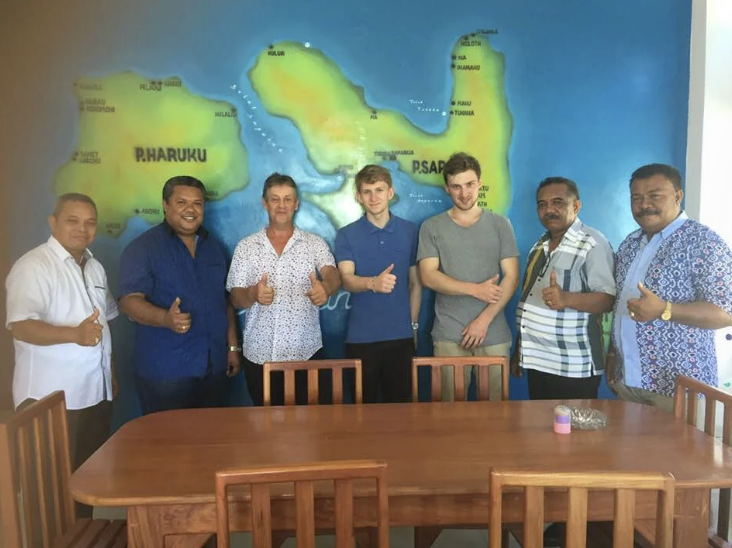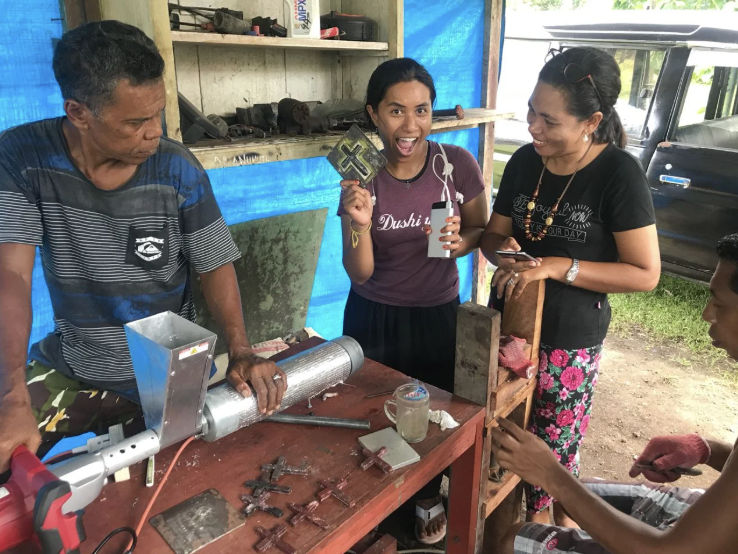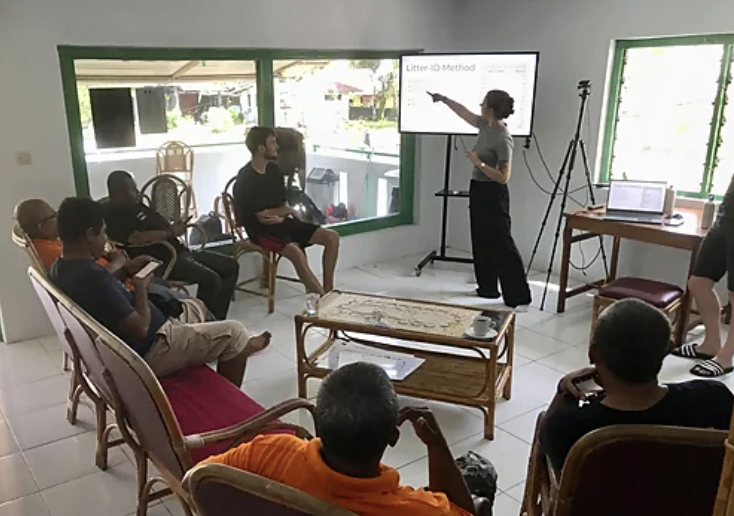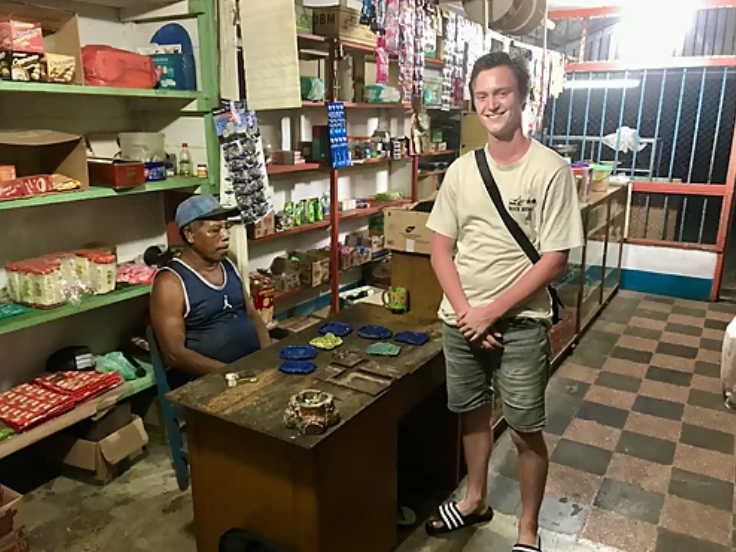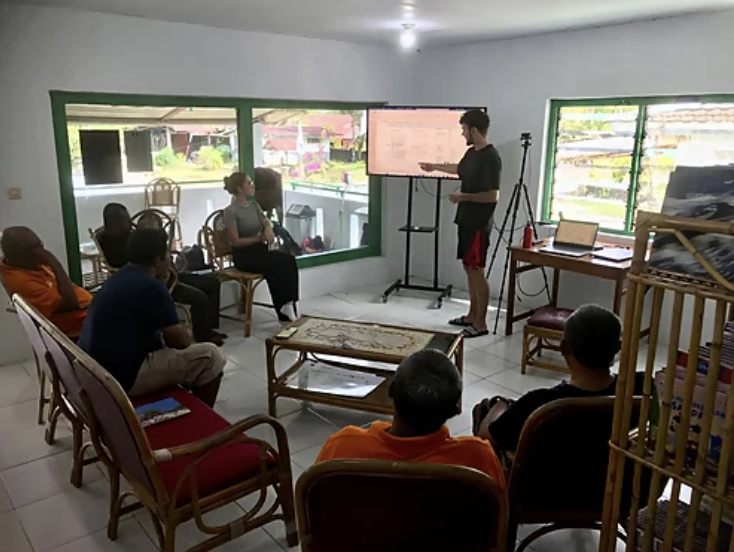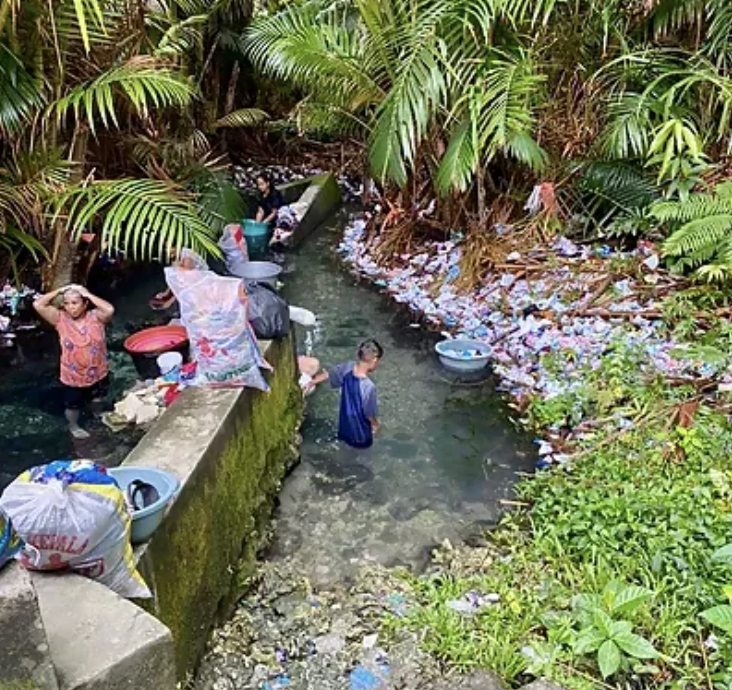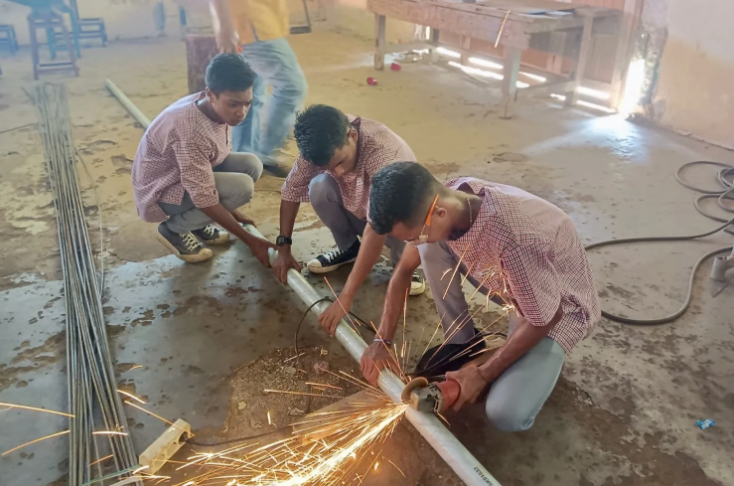Research Results
-
![]()
Gijsbert van Tweehuysen
Gijsbert Tweehuysen , specialist in plastics and initiator of Waste Free Waters, came to the Moluccas for a month to advise us on a waste system that suits the scale of small islands like Saparua.
Gijsbert took the time to explore the entire island of Saparua. He also gave a guest lecture at Pattimura University.
-
![]()
Pattimura University / Ambon
GPM Klasis pp Lease established contact with Stevi Titaley . Stevi is a lecturer at the technical faculty of Pattimura University in Ambon (UnPatti). Students conducted research into the nature and extent of the waste problem on Saparua. This data is necessary to design a suitable solution. Stevi taught courses on processing organic waste into compost.
-
![]()
Menno van Driel & Ide Op Opdam
Clear Rivers in Rotterdam facilitated Ide Opdam and Menno van Driel's graduation project on Saparua. They studied hydraulic engineering. Ide researched the social impact of waste-related flooding on Saparua. Read his thesis . Menno researched the causes of flooding caused by waste. Read his thesis .
-
![]()
Radbout University Nila Patty
Nila Patty (alias NonaNoPlastic ) also spent 3 months on her research into the waste problem.
Nila did this from Siri Sori Islam, where her father was born. She studied medical biology at Radboud University in Nijmegen. Nila has been living a zero-waste lifestyle for years and is one of the advocates and influencers in Indonesia. Read her thesis here.
-
![]()
Gaia de Koning
Gaia is studying water management at the Rotterdam University of Applied Sciences. Along with two fellow students, she spent four months on Saparua Island to complete her internship with our partner organization, Toma Majo Lease. Gaia conducted research on the impact on the mangrove forest along Saparua Bay. The list of recovered items can be found here. Photos of the recovered items can be found here .
Gaia also made educational posters for the Paparisa.
Together, Gaia and Daan drew up a plan of action to investigate and improve the drinking water of Air-Raja and Paparisa.
-
![]()
Daan Orbons
Daan is studying water management at the Rotterdam University of Applied Sciences and has conducted research into solutions for the plastic pollution in the mangrove forest on Waisisil Beach, which is deteriorating fish stocks in the bay of Saparua.
Daan worked with Gaia on the Litter ID after a cleanup at Waisisil. This helps us understand the type of litter. You can find the list of found items here. Photos of the found items can be found here .
Together, Gaia and Daan drew up a plan of action to investigate and improve the drinking water of Air-Raja and Paparisa.
-
![]()
Thom van der Lely
Thom van der Lely is studying water management at the Rotterdam University of Applied Sciences. Along with Gaia and Daan, he chose Saparua to intern at our partner organization, Toma Majo Lease. Thom researched the causes of the annual flooding on Saparua. He uncovered more than just the waste problem and the newly constructed bridge with its narrow passage blocking the drainage channels.
-
![]()
Daan, Gaia & Chris
Gaia, Daan, and Chris jointly developed an action plan to improve the quality of the drinking water. During interviews, residents indicated that it tastes like soap and is contaminated because the drinking water isn't separated from the water used for washing and bathing. They collaborated with Clear Rivers, which also works on drinking water. Laboratory results are now available. Chris Schotman conducted a follow-up study in 2024. Read his report .
-
![]()
Anouk Roodzant and Yara Bandsma
Anouk and Yara worked with schoolchildren from the five schools on Waisisil Beach near Paperu to make their own waste bins. They wanted to place them on public roads, but after consulting with the authorities, it was decided to place them on the school grounds themselves. Read Yara's fact sheet and Anouk's project report.
-
![]()
Chris Schotman
During interviews conducted by Gaia and Daan in 2023, residents indicated that the water tasted like soap and was contaminated because the drinking water wasn't separated from the water used for washing and bathing. Laboratory results are now available. Follow-up research was conducted in 2024 by Chris Schotman. He wrote this report . His analysis raised new questions, and Chris interviewed more people. To be continued in 2025.




